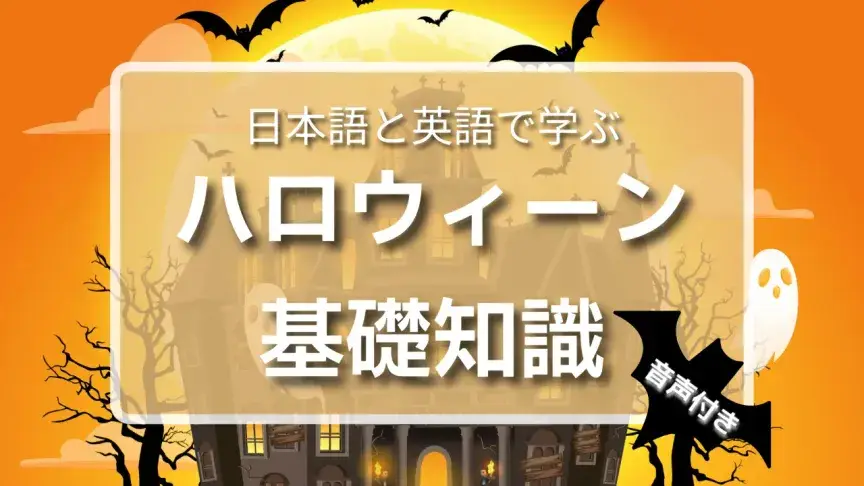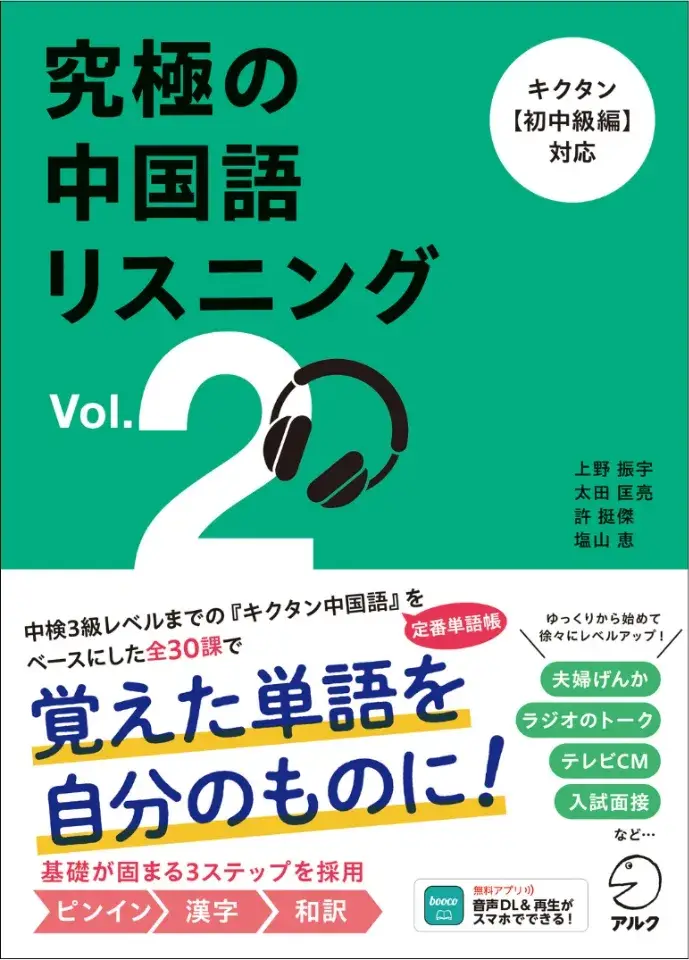
ハロウィーンの季節がやってきました!仮装やお菓子、カボチャのランタンでおなじみのこのイベントですが、その起源や本来の意味を知っていますか?もともとは古代ケルトの祭り「サウィン(Samhain)」に由来し、死者の霊を慰める行事として始まったハロウィーン。本記事では、そんなハロウィーンの歴史や語源、文化的背景を日本語と英語で紹介します。由来を知ると、ハロウィーンがもっと深く楽しめるはずです。
目次
※ 音声はENGLISH JOURNALのサイトで聞くことができます。
ケルト人から広まったハロウィーン
Halloween Originated From the Celts
10月31日の夜に行われるハロウィーンは、古代ヨーロッパの先住民族ケルト人の原始教であるドルイド教で祝われた「サウィン(Samhain)」の祭りが、起源の一つであるといわれています。
ケルト人は現在の中央ヨーロッパに起源を持ち、紀元前500年ごろまでにはブリテン諸島やアイルランドを含む広範囲に勢力を広げていました。
ドルイド教では、1年を「光の季節」と「闇の季節」に分けており、闇の季節(新年)の始まりは11月1日とされていました。前日10月31日の夜に行われるサウィン祭では、その年の収穫を祝い、同時に1年の終わりを迎えました。
この夜は生と死の世界の境界が開かれると信じられており、死者の霊が地上に戻ってくると考えられていました。そのため人々はかがり火をたき、頭蓋骨など死を象徴する飾りを置き、悪霊を追い払おうとしました。大きなカブをくりぬいて目や鼻を作り、火をともして供え物を置き、死者を慰めたとも言われています。
Halloween, which is celebrated on the night of October 31, is said to have originated from the “Samhain” festival of Druidism, an ancient religion practiced by the Celts. The Celts were a collection of tribal groups living in Europe, who originated in what is now central Europe. By 500 B.C., they had extended their influence over most of Europe, including the islands of Britain and Ireland.
As mentioned above, Druidism was the religion of the Celts. In this religion, a year was divided into two halves: a light half and a dark half. The dark half (the New Year) began on November 1, and the festival of Samhain was the end of the year celebration on the evening of October 31.
On this day, the year’s harvest was celebrated as well. Celts believed that, on this night, the boundary between the worlds of the living and the dead became blurred and the ghosts of the dead returned to the earth. Thus, people lit bonfires, decorating them with skulls and other motifs associated with death, carved eerie eyes and noses into large turnips, and decorated these turnips with flickering candles. Fruits and vegetables were given as offerings for the dead, to encourage them to return to their world before they brought misfortune to the living.
語源はAll Hallows(万聖節)?
Is “All Hallows” (All Saints’ Day) the Origin of Halloween?
キリスト教のカトリック教会では、11月1日を「万聖節(All Saints’ Day)」として、すべての聖人をたたえる日としています。10月31日はその前夜祭にあたり、これが「All Hallows’ Eve(諸聖人の前夜)」と呼ばれました。これが短縮されて「Halloween」となったのです。
ただし、ハロウィーンがカトリックの祭りと直接結びついているわけではありません。ケルトのサウィン祭と日付が偶然重なっていたことから、後に同時期の行事として融合していったと考えられています。
November 1, All Saints’ Day, is the day the Roman Catholic Church celebrates its Saints. October 31 is the eve of All Saints’ Day. November 2 is All Souls’ Day (Feast of All Souls), and Roman Catholics hold a special three-day service from October 31 to November 2 to pray for the souls of the dead.
Some people say that Halloween is a fusion of the Samhain festival of Druidism and All Souls’ Day, but this is incorrect. Actually, some practicing Catholics regard Druidism as a cult and do not celebrate Halloween at all. It is probably more accurate to say that the Celtic festival “just happened” to coincide with the day of the Catholic festival.
Incidentally, there are some Catholics who believe that Halloween disrespects the dead and have long protested against the theory that All Hallows’ Eve is the origin of the word Halloween.
仮装の由来は「悪霊の仲間のふり」
Dressing Up as Witches or Companions of the Dead
ドルイド教では、ハロウィーンの夜は1年に1度、生と死の世界の境にある門が開かれる。死者の悪霊が自由に二つの世界を行き来できるため、古代ケルト人たちはかがり火をたいて、死者の悪霊を追い払おうとした。また、火をたくだけではなく、人々は自ら魔女や幽霊の格好に仮装して彼らの仲間になりきり、死者の世界に連れていかれるのを防いだ。そして死者たちに仲間だと思い込ませ、災いをもたらさないようにした、といわれている。この仮装の習慣こそが、現在のハロウィーンの起源だと考えられている。
今ではハロウィーンは世界中で祝われているが、死者の悪霊をはらうという宗教的な要素は薄れ、仮装して楽しむ祭りになっている、といっても過言ではないだろう。近頃は、幽霊や魔女などの不気味な格好だけでなく、流行の漫画のキャラクターなどの仮装も多く見られる。
In Druidism, Halloween is the one night of the year when the gate between the worlds of the living and the dead is opened. On this night, the evil spirits of the dead can freely travel between the two worlds. The ancient Celts lit bonfires to keep the spirits away. Additionally, people dressed up as witches and ghosts to pose as the spirits’ friends so they wouldn’t be taken to the world of the dead and to prevent any misfortune happening. This custom of dressing up in costumes is believed to be the origin of today’s Halloween.
Today, Halloween is celebrated all over the world, but in a different way. The religious element of warding off evil spirits has been lost, and it has become more of a festival to enjoy dressing up in costumes. Nowadays, people dress up not only in spooky costumes, such as ghosts and witches, but also as popular cartoon characters.
カボチャのちょうちん「ジャック・オー・ランタン」
Pumpkin Lanterns

ハロウィーンの飾りといえば、カボチャのちょうちん。実物はなくても、目や口の形がくりぬかれたカボチャを写真や絵で見たことがある人は多いのではないだろうか。このカボチャをくりぬいて作ったちょうちんはjack-o’-lantern(ジャコランタン)と呼ばれている。古代ケルト人たちはカボチャではなく、大きなカブに不気味な目鼻立ちをくりぬき「悪霊よけ」の飾りにしたという。
「ジャックのランタン」という意味を持つこのカボチャのちょうちん。その由来は、生前、酒代を巡って悪魔をだまし続けた通称「Stingy Jack(スティンギー・ジャック:けちのジャック)」という、アイルランド神話に出てくる男だ。死後、天国にも地獄にも行けなかったジャックは、道を照らすための1粒の石炭を与えられ闇夜に放り出された。彼は中をくりぬいたカブに石炭を入れてちょうちんとして使い、以来ずっと下界をさまよい続けている。今やジャコランタンは―カブよりも大きくてくりぬきやすいカボチャに姿を変えて―ハロウィーンの定番の飾りとなり、家々の玄関先に火をともして飾られるようになった。
欧米では毎年、全国各地でこのジャコランタンに使うカボチャのくりぬきコンテストが行われる。大きさや形の美しさ、表情の面白さなど、競うポイントはさまざまのようだ。
Pumpkin lanterns are the most popular decoration of Halloween. Even if you have never seen an actual carved-out pumpkin, you have probably seen pictures or drawings of pumpkins with eyes and mouths. These hollowed-out pumpkins are called “jack-o’-lanterns.” The ancient Celts used large turnips, not pumpkins, as a decoration to “ward off evil spirits” by carving out eerie eyes and noses into them.
This pumpkin lantern’s name means “Jack’s lantern.” The origin of this pumpkin lantern is an Irish myth about a man named “Stingy Jack,” who kept cheating the devil over money for liquor during his lifetime. After his death, unable to go to heaven or hell, Jack was sent off into the dark night with only a piece of coal to light his way. Jack put the coal into a carved-out turnip to use it as a lantern, and he has been wandering the earth ever since. Nowadays, jack-o’-lanterns — in the form of pumpkins, which are bigger and much easier to carve than turnips — are lit and displayed on the doorsteps of houses as a standard Halloween decoration.
In Europe and North America, annual pumpkin-carving contests are held in many places. The judging criteria seem to vary among competitions, including when it comes to the jack-o’-lanterns’ sizes and shapes as well as facial expressions.
「トリック・オア・トリート!」の由来
Give Me Candy or I’ll Play Tricks on You!
ハロウィーンの夜、子供たちは近所の家を回ってお菓子をもらう。“Trick or treat!”というのは、ハロウィーンの夜の決まり文句のようなもので、「お菓子をくれなきゃいたずらするぞ!」という意味だ。第2次世界大戦が終わり、砂糖が配給制度でなくなった後、ハロウィーンに目を付けた製菓会社がキャンペーンを展開し、一時期はお菓子の売り上げが26億ドルに上ったこともある、アメリカ全土で年間2番目に大きな商業イベントだ(ちなみに1番目はクリスマスで、3番目はバレンタイン)。
“Trick or treat!”という声が聞こえたら、大人はチョコレートやキャンディーなど、用意していたお菓子を子供たちに渡す。昔は、お菓子をくれないと色が付いた泡のスプレーやトイレットペーパーなどで本当にいたずらをしていたが、最近では防犯などの理由から、決められた家を訪問してお菓子をもらうようにするなど、習慣も時世に合わせて変化している。
On Halloween night, children go around the neighborhood to trick-or-treat. “Trick or treat!” is a common phrase used on Halloween night, meaning “Give me candy or I’ll play tricks on you!” After World War II ended and sugar became a popular commodity, confectionery companies turned to Halloween to launch their campaigns. At one point, candy sales reached $2.6 billion, making it the second largest annual commercial event in the United States. (Christmas is first, and Valentine’s Day is third.)
When children yell, “Trick or treat!” adults hand out chocolates and other types of candy and treats they have prepared. In the past, if they didn’t give candy, children would play real tricks on them with colored foam spray or toilet paper, etc. These days, however, for reasons of child safety, the custom has been changing to one of only having children visit designated houses to receive candy.
文:陣内真佐子(日本語)/Meme Communications Inc.(英語)
協力:海外書き人クラブ
画像:Mayur Gadge(Pixabay)
boocoで読める!アルクの新刊、続々登場
語学アプリ「booco」なら、アルクのベストセラー書籍200タイトル以上が、学習し放題!
「キクタン」などアルクの人気書籍800冊以上が音声対応。「読む」に対応した書籍では、本文と音声をスマホで手軽に利用できるほか、一部の書籍では、学習定着をサポートするクイズ機能で日々の復習や力試しも可能です。さらに、Plusプランに加入すれば200冊以上の書籍が学習し放題に!
boocoの「読む」機能では、次のような使い方ができます。
① 学習したいページを見ながら音声を再生できる
② 文字サイズや画面の明るさを調整できる
③ 書籍内検索ができる
※ これらの機能には一部の書籍が対応しています。

▼「booco」の無料ダウンロードはこちらから






